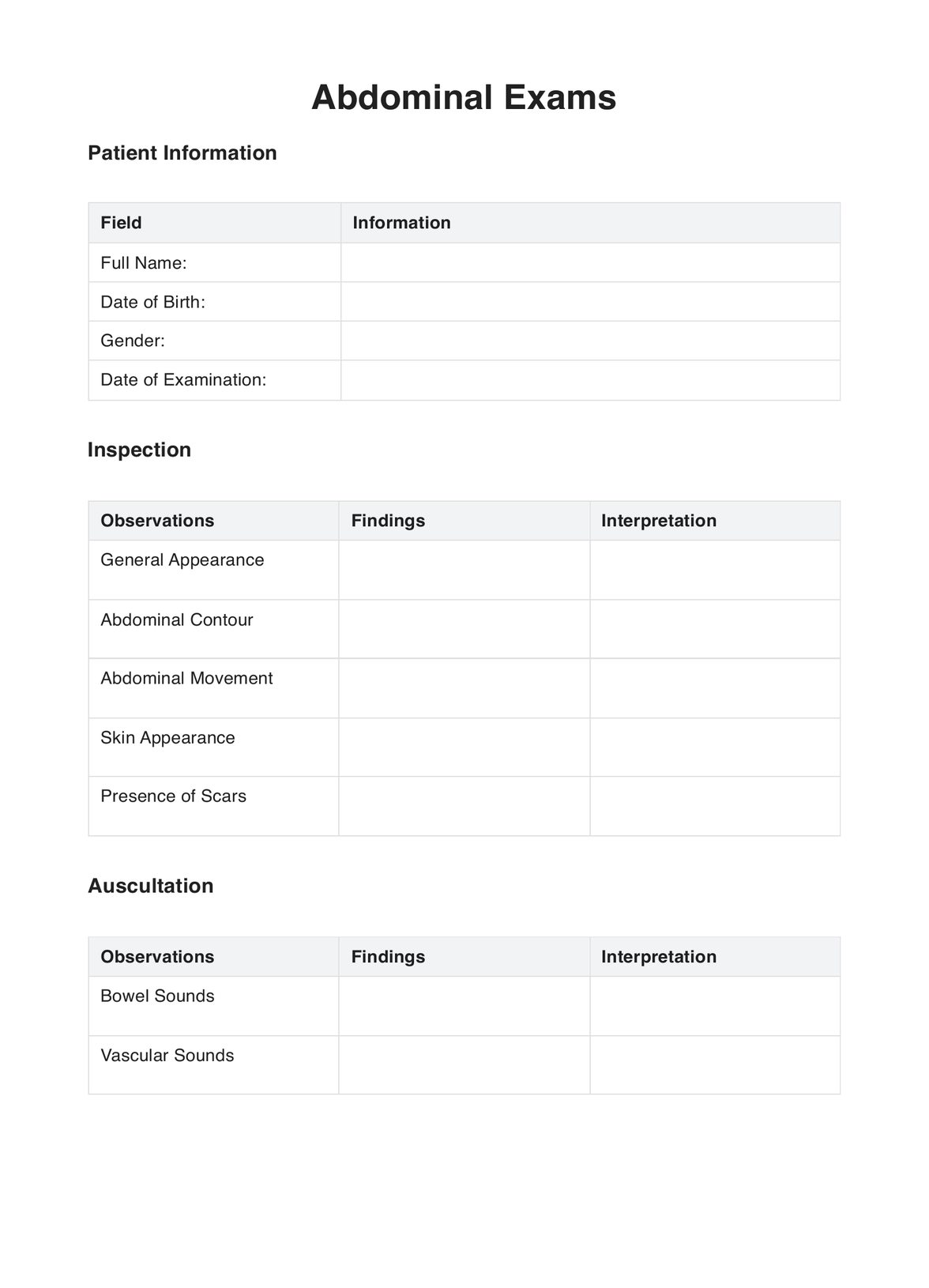The Abdominal Exam Template is designed explicitly for abdominal examinations. While it provides a comprehensive approach to this particular assessment, it may only be suitable for some types of medical exams, which may require different parameters.

Abdominal Exam
Master abdominal exams with our comprehensive guide & free PDF template. Streamline your practice with Carepatron, your ideal abdominal exam app.
Abdominal Exam Template
Commonly asked questions
Absolutely! The Carepatron Abdominal Exam App is designed to work seamlessly across various devices, including smartphones, tablets, and computers, allowing you to conduct, record, and share abdominal exams wherever you are.
Yes, Carepatron allows you to share the results of the abdominal exam directly with your patient. This feature fosters transparency and allows for an open discussion about the patient's health status and the next steps in their care.
EHR and practice management software
Get started for free
*No credit card required
Free
$0/usd
Unlimited clients
Telehealth
1GB of storage
Client portal text
Automated billing and online payments











